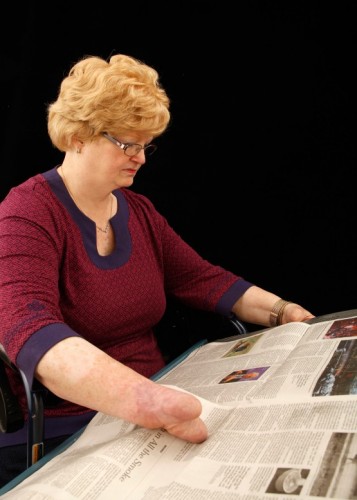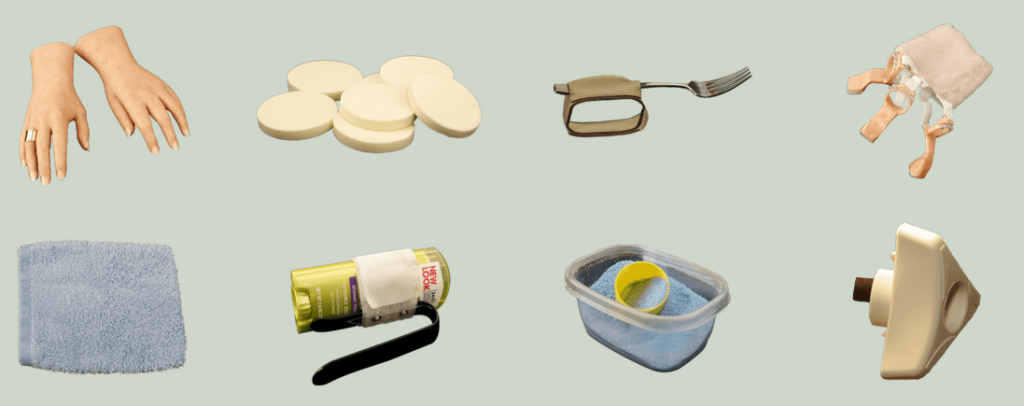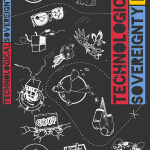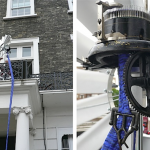“In response to a heart attack, Cindy experienced an adverse reaction to medication and multiple organ failure. These complications resulted in amputations involving all four limbs: both of her legs below the knees and varying amounts of each of her fingers. With time, though, Cindy regained her ability to walk and started to find a “new normal.” She got great care from occupational therapists, physical therapists, physicians, and prosthetists.
But she found that the standard tools provided to her, even at a top-flight rehab hospital, didn’t facilitate some of the most important things she wanted to recover—how to write a thank you note, feed herself, put on makeup and jewelry, turn the pages in a picture book as she reads to her grandchildren. So Cindy started to design and build what she needed. From small hacks on her hand cream jar to repurposing cable ties for pulling out drawers and salad tongs for holding a sandwich, Cindy has embraced an everyday engineering ethic that she never thought possible.
 After Cindy’s success with the pen holder, she started to think about other situations where a precise hand movement would be desirable. Take eating, for example. Cindy amassed a clever set of tools that would allow her to self-feed, even in restaurants.
After Cindy’s success with the pen holder, she started to think about other situations where a precise hand movement would be desirable. Take eating, for example. Cindy amassed a clever set of tools that would allow her to self-feed, even in restaurants.
A leather cuff, fitted with a pocket and attached via an adjustable velcro band (or another version with a leather pocket on an elastic cuff), would brace a standard fork at an angle roughly perpendicular to her hand; a small set of tongs would allow her to pinch and grasp things like salads; and an adaptive rocker knife would allow her to cut precisely.
We created this website because we are moved by Cindy’s story. We also created it because we are convinced that her story illustrates new ways of understanding who can engineer, what counts as engineering, and why this matters. This website is about her adaptations. It is also about Cindy herself. And it’s about a new way of imagining engineering.”
See & read more at Engineering at Home, a project from Caitrin Lynch and Sara Hendren at Olin College of Engineering.






